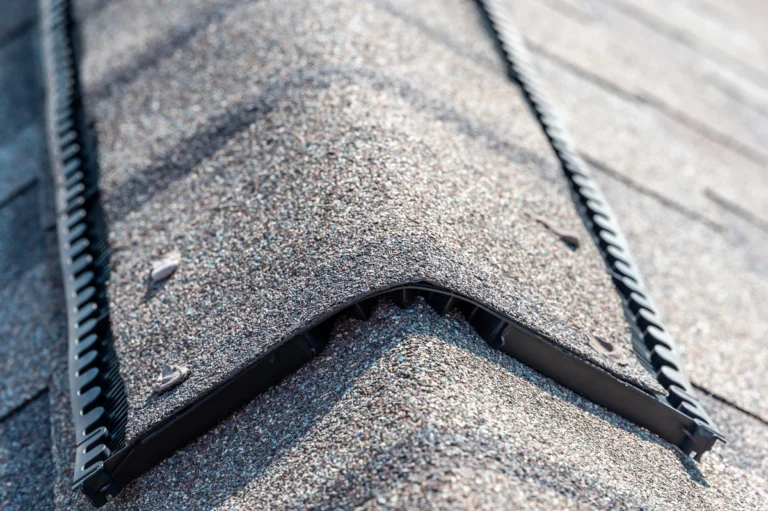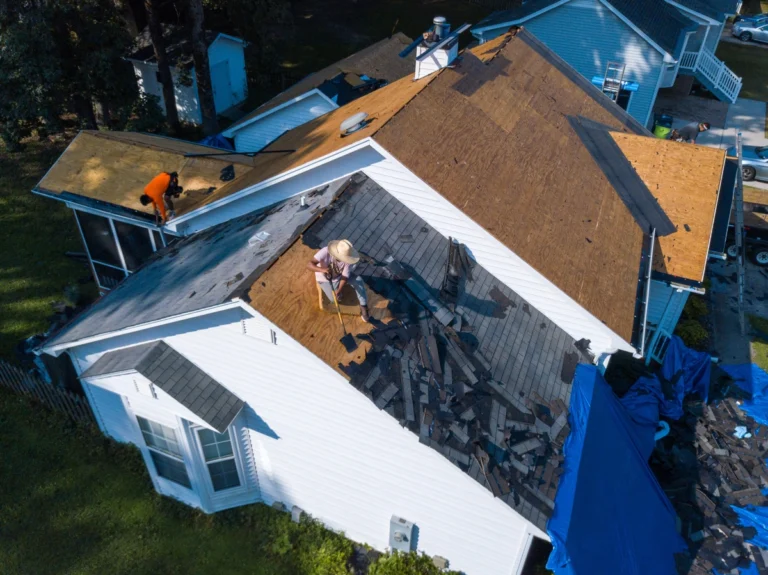Homeowners insurance can be a challenge to navigate, especially when it comes to getting a roof replacement. As a homeowner, it’s essential to know how to file an insurance claim the way as well as how to get insurance to pay for roof replacement services when you need them most.
The truth is, your homeowners insurance company operates just like any other insurance company — meaning they want to hold on to as much money as possible. Therefore, they’ll try every trick in the book to minimize what they can offer you.
Fortunately, we’re here to walk you through all the steps on how to get insurance to pay for roof replacement services.
Read on to learn more.
Understanding Your Homeowners Insurance Policy

The first thing you need to understand when it comes to getting your homeowners’ insurance company to pay for roof repairs or a roof replacement is your actual, active policy. The coverage you receive will depend entirely on the insurance company and the specific policy you have with them, and when it comes to roof replacements, most policies only cover roof damages that occur from sudden and unexpected events.
This includes:
- Storm damage from hailstorms, tornadoes, hurricanes, high winds, and ice damage
- Fires and smoke damage
- Electrical damage
- Falling trees or large debris
- Explosions
- Riot damage from civil unrest
- Vandalism or malicious mischief
- Aircraft damage
This does not include:
- Having an old roof. If your roof is nearing age 20 or surpassing it, there’s a good chance you’ll get denied coverage for a complete roof replacement. This is because older roofing systems are more vulnerable to damage, which means even light winds and rain can cause shingle loss and water damage. The age of your roof also leaves a lot of wiggle room for the insurance adjuster to state that the irreparable damage was the result of neglect. This doesn’t always mean that you won’t get any money to put towards a new roof, but it does mean that your insurance company can easily refuse to renew your policy until your roof is repaired or replaced and professionally inspected — and that’s in addition to denying your insurance claim.
- Having damage that is cosmetic. Cosmetic refers to superficial damage (surface damage) rather than something that interferes with your roof’s function. If your insurance company determines that all you have is cosmetic damage, they’ll deny your claim outright. For example, if a large tree branch falls on your roof, but all it does is scratch a few shingles, you won’t get any money for repairs, and you certainly won’t have a case for needing a new roof. However, if the tree branch fractures and breaks a whole bunch of shingles or puts a hole in your roof, then you have a good case for your insurance claim.
- Damage that was preventable. Roof leaks are often signs of storm damage, however, they can also be a sign of a neglected roof. For example, if you fail to maintain your roof and keep an eye on critical components such as roof flashing, roof decking, etc., your roof will suffer for it. This means the insurance adjuster may conclude that the damages are due to negligence, and they’ll deny your claim.
- Flooding or earthquake damages. Certain weather events, such as earthquakes and flooding, are usually excluded from homeowner insurance policies. Therefore, they require supplementary policies (known as rider policies) for coverage. If you don’t have these add-on policies and an earthquake shakes your roof apart, you won’t be able to file an insurance claim for a new roof.
Understanding How to File an Insurance Claim

If you want to know how to get insurance to pay for roof repair or replacement services, then you need to know how to file an insurance claim the right way. This means not only understanding what your insurance company will and won’t cover when it comes to your roof but also knowing how to properly support your claim.
Here’s how it’s done:
- Take the time to assess the damage. The signs of roof damage are mostly the same regardless of whether you need repairs or a new roof. Therefore, the most important thing to keep in mind is the age of your roof and the event that caused the damage in the first place. As you walk around your property and take a look around your attic, take note of any visible signs of damage — such as missing or damaged shingles, rusted roof flashing, rotting wood, water stains, active leaks, and so on. Be sure to document everything you see by taking clear photos and taking note of the time, date, recent event, etc. (Bonus points if you have recent photos of your roof in good condition to convey that the issues you’re experiencing are not from neglect.)
- Call a trusted roofing contractor. As soon as you notice any signs of damage, you’ll want to seek out a reliable roofing contractor immediately. Most professional roofing companies offer free emergency roof inspections, but you’ll want to be prepared to pay for a thorough roof inspection just in case. The roofing contractor will be able to determine the cause and extent of the damage, as well as whether a total roof replacement is needed. They’ll also provide you with a detailed report of their findings, which you’ll want to include in your insurance claim when filing.
- File the insurance claim. Next, you’ll want to ensure you get your hands on the proper insurance claim forms and fill them out correctly. Include all the details from the roofing contractor’s findings (photos, too), and then submit the claim. Once your insurance company reviews your claim, they’ll schedule a visit with their insurance adjuster to determine whether your roof insurance claim is valid. Make sure you make an appointment with your roofing contractor to come at the same time as the adjuster to ensure they don’t make any “mistakes.”
Getting your insurance company to pay for a new roof can be tricky. Fortunately, if your claim is denied, the roofing company you’re working with will likely offer special financing options to help you. Need a new roof? Get in touch with the roofing specialist at Sundance Kitchen, Baths, & Exteriors today. We offer insurance claim support, special financing, and more!





